Dear Somebody: Behind the craft #1
The making of elegy/a crow/Ba, my first accordion book
Hi all,
Welcome to my first craft post, where I’m focusing on the process behind elegy/a crow/Ba, my first accordion book and illustrated poem.
Last semester, I took a sketchbooking class with Kruttika Susarla. I was eager to develop a sketchbook practice that, I hoped, would cultivate a deep love of drawing. It sounds silly to say that I want to love drawing more, especially because I am an artist by nature and trade, but while my affection for words feels innate, drawing has always felt more like a stranger: someone I am intrigued by, but also afraid of. And like most relationships, it’s harder to love something that challenges you or is difficult to understand.
When I write and illustrate stories, the words come first. This is because I have more of a writer-brain than a drawing-brain; I think and process in and through words. This class encouraged me to push against my natural inclinations—to prioritize illustration as the seed from which a story can grow.
I knew I wanted to illustrate a poem that I’d written, but without having a poem written to direct me, I felt a bit lost. I chose to do something I never do, which is trust the process. I’m a Type A personality, which is conducive for running a business, but not so helpful when getting lost in creative work. I focused on drawing whatever came to me, believing that the words—that is, the entire poem and story—would somehow come to me later.
I began with some thumbnail sketches:
As you can see here, I used a 6-page template to storyboard my illustration. Together, with a front and back cover, this created an 8-page book. I knew I wanted the end product to be an accordion book, so I settled on a number of pages that felt manageable with my time constraints.
I didn’t have a story in mind, but I did have a subject: my relationship with my paternal grandmother, who lived with us and cared for me throughout most of my childhood before moving back to India when I was in high school.
Without a text guiding me, I wasn’t sure where to begin. Instead, as I do with most of my work, I tried to pinpoint the feeling I wanted to convey: nostalgia, mostly, and the pinprick of heartache that memory evokes.
Here are a few different stories taking shape through tiny thumbnail illustrations:
By the fifth iteration, I felt like I was getting somewhere. The concept of a panoramic illustration, drawn from a bird’s-eye viewpoint, captured the combination of awe and loneliness that I was after. Vast scenery surrounded two tiny characters, creating mystery, which is essential to every engaging story. This sketch did what I wanted it to—it asked a question: What’s the story here?
Whenever I read interviews with authors and illustrators, they talk about how, eventually, after hours of writing about them, the characters began speaking on their own. They talk about how the idea for their story came from nowhere, a shiny moon that suddenly appeared in orbit. They note how inspiration is not something that strikes like a lightning bolt, but something that visits occasionally, after you’ve been sitting at your desk discouragingly, doing the damn work.
It’s easy to roll your eyes when you read this, especially if you’re someone like me, who wants a formula for success that they can follow. It’s discouraging when any creative you admire tells you that they don’t know how the astonishing work they made came to fruition. It just kinda happened, they say. All they know is that they showed up. They put their hands on the keyboard or their fingers around the paintbrush. They wrote words that amounted to nothing. They drew embarrassing sketches that led nowhere. And once in awhile, usually when they least expected it, something beautiful arose.
The truth is, that is the formula that I’ve been looking for—I just hoped there was something else I was missing. But there isn’t. The formula is simple: Show up, do the work, see what happens.
I did a tiny color sketch next. Here, you’ll see that I combined elements from my fourth concept with my fifth, incorporating the bird as a third character. It wasn’t until I drew this that the bird became a crow, and it wasn’t until the bird became a crow that my story, all of a sudden, came together. This was a poem about our culture, our heritage, our relationship, and my memories. This was the poem about my grandmother that I’d been wanting to write.
It was the first time that this strange phenomena happened to me, and it was such an important, special lesson for me to experience. Drawing is uncomfortable for me, but it’s a skill that requires mastery if I want to successfully share the stories inside me with the world of children’s literature. This unexpected breakthrough gave me the motivation to keep going.
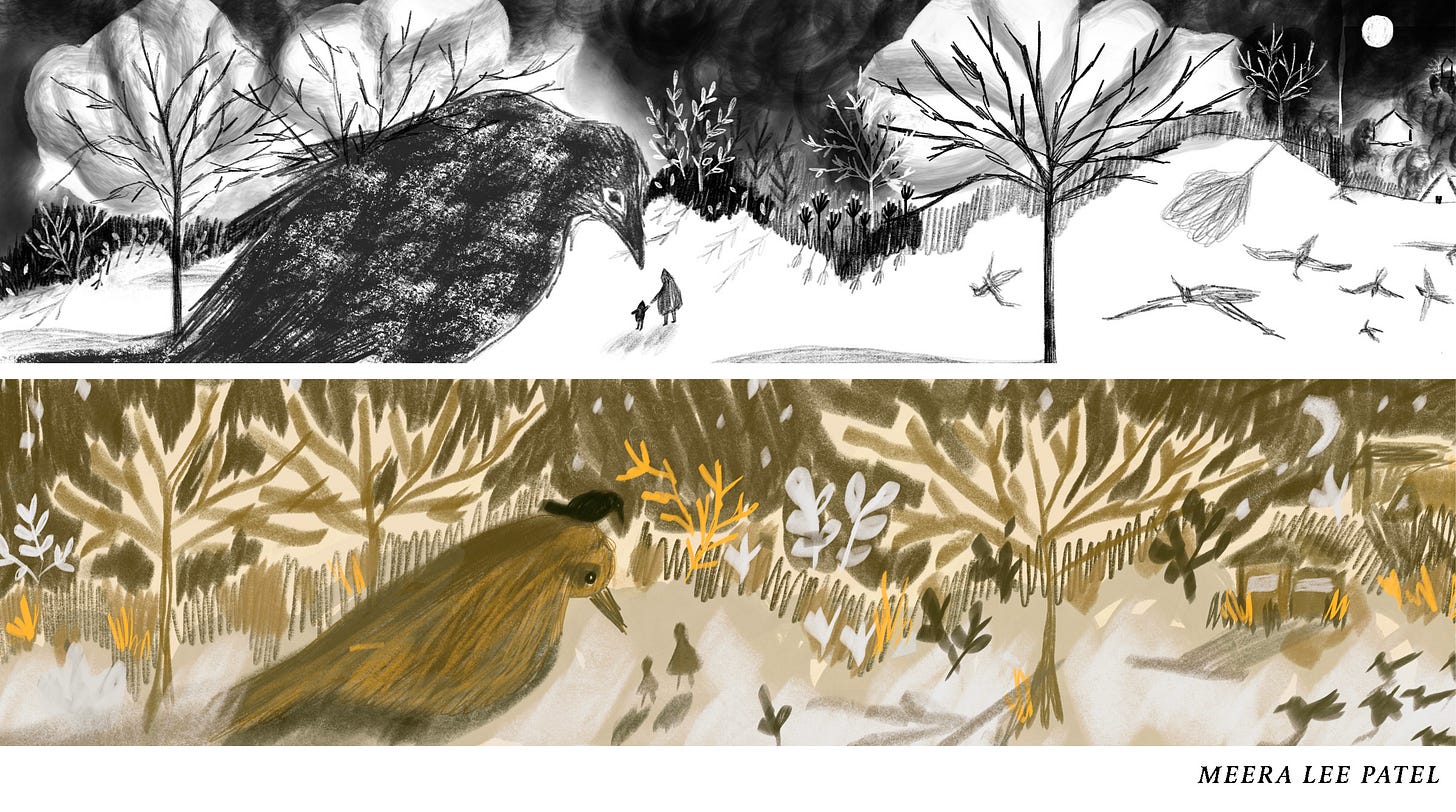
I did a tighter sketch on Procreate, and tried a quick sepia-toned colorway. I liked it, but the blue version felt just right—cold, wintry, lost; like a story that happened many lifetimes ago. So I collected my materials and began the final drawing on 2 strips of Arches cold-pressed paper that I taped together—real fancy!
The completed painting is 8”x48” and was created with a combination of Holbein gouache (my underpainting and large swaths of color), Faber Castell polychromos colored pencils (detail work and texture), and Caran D’Ache neopastel oil pastels (blending, atmosphere, and texture).
After the illustration was completed, the words slowly came. I wrote and rewrote the poem that accompanies the final page of this book several times, and then spent many weeks between October and December of 2022 revising it.
I then added the front and back covers in Photoshop and spent approximately a week or two of my life trying to format it properly so that when printed across 4 panels and assembled, the accordion book would fold and unfold exactly the way I wanted it to.
Here’s a photo of my shoddy version:
When I couldn’t quite figure it out, my friends at Done Depot here in St. Louis graciously took this task off my hands and printed the final panels for me. Over the past few weeks, I’ve been assembling the accordion books here and there, whenever I have small patches of time, and I’m so excited to now offer them for sale.
elegy/a crow/Ba is an 8-page accordion book based on an illustrated poem I wrote about the memories, passing, and recollection of my grandmother. This poem was inspired by the Hindu tradition of Shradhha, in which we feed crows, the symbols of our ancestors and the carriers of our lineage.
A limited edition of the book, assembled, signed, and numbered by hand, is now available in my shop.
If you read this post, I’d love to know what you thought!
If you'd like to support me, you can pre-order my upcoming book of illustrated essays, How it Feels to Find Yourself, for yourself, a loved one, or both! My art prints, stationery, and books are available through BuyOlympia. You can also pledge your support for this newsletter by becoming a future paid subscriber.
See you on Friday, with a regular Dear Somebody post!
xx,
M

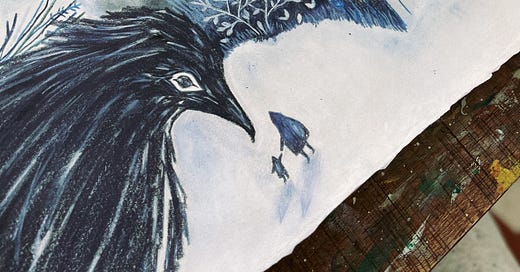



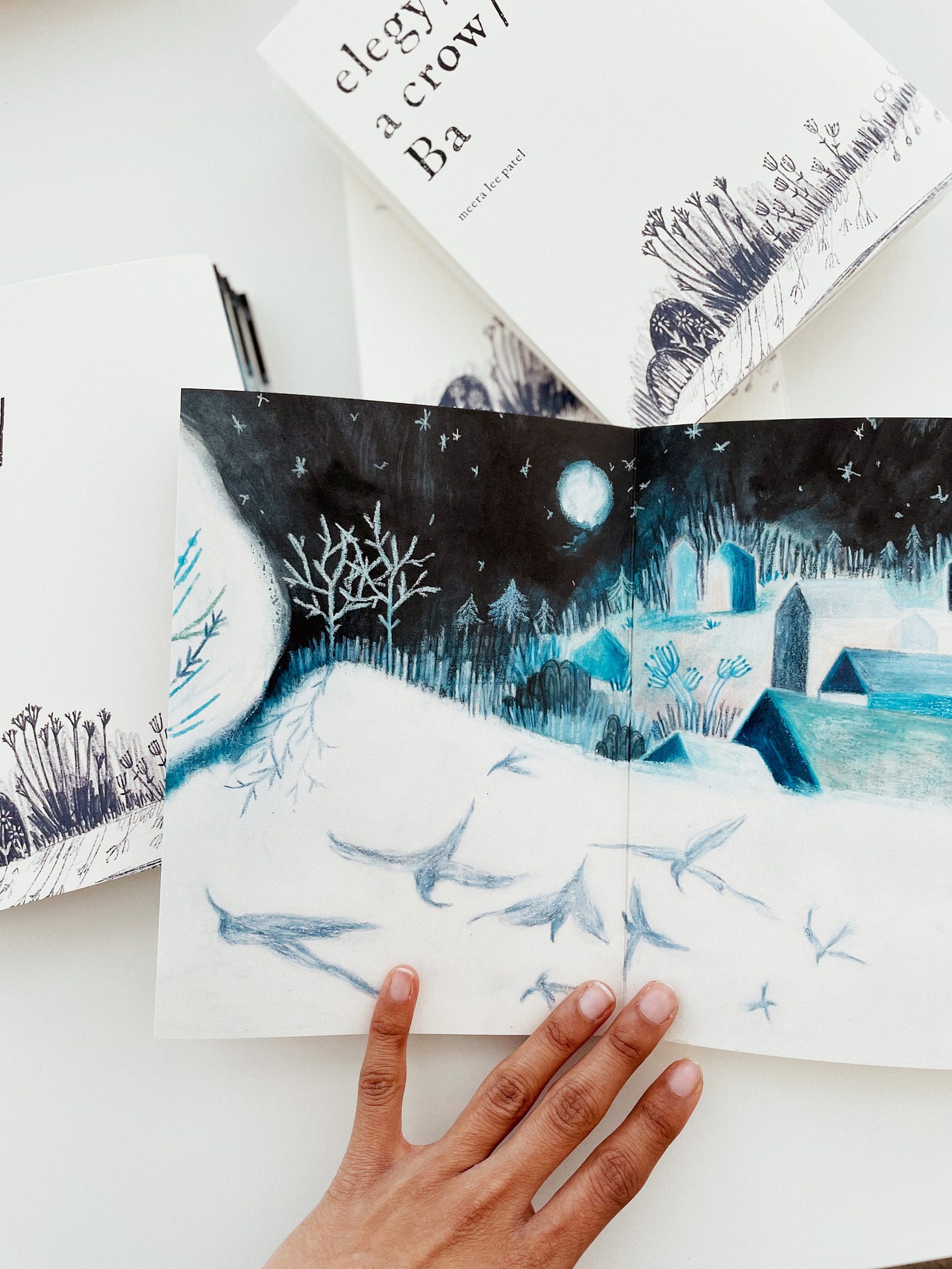
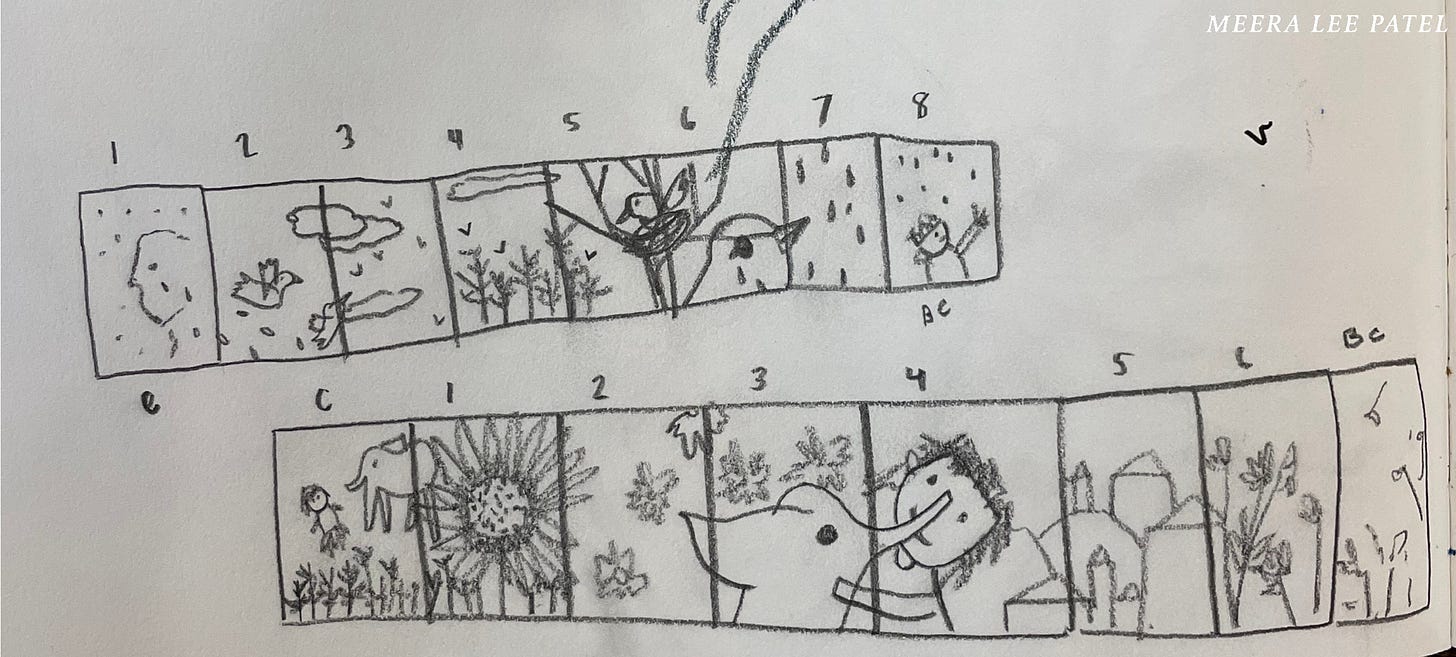


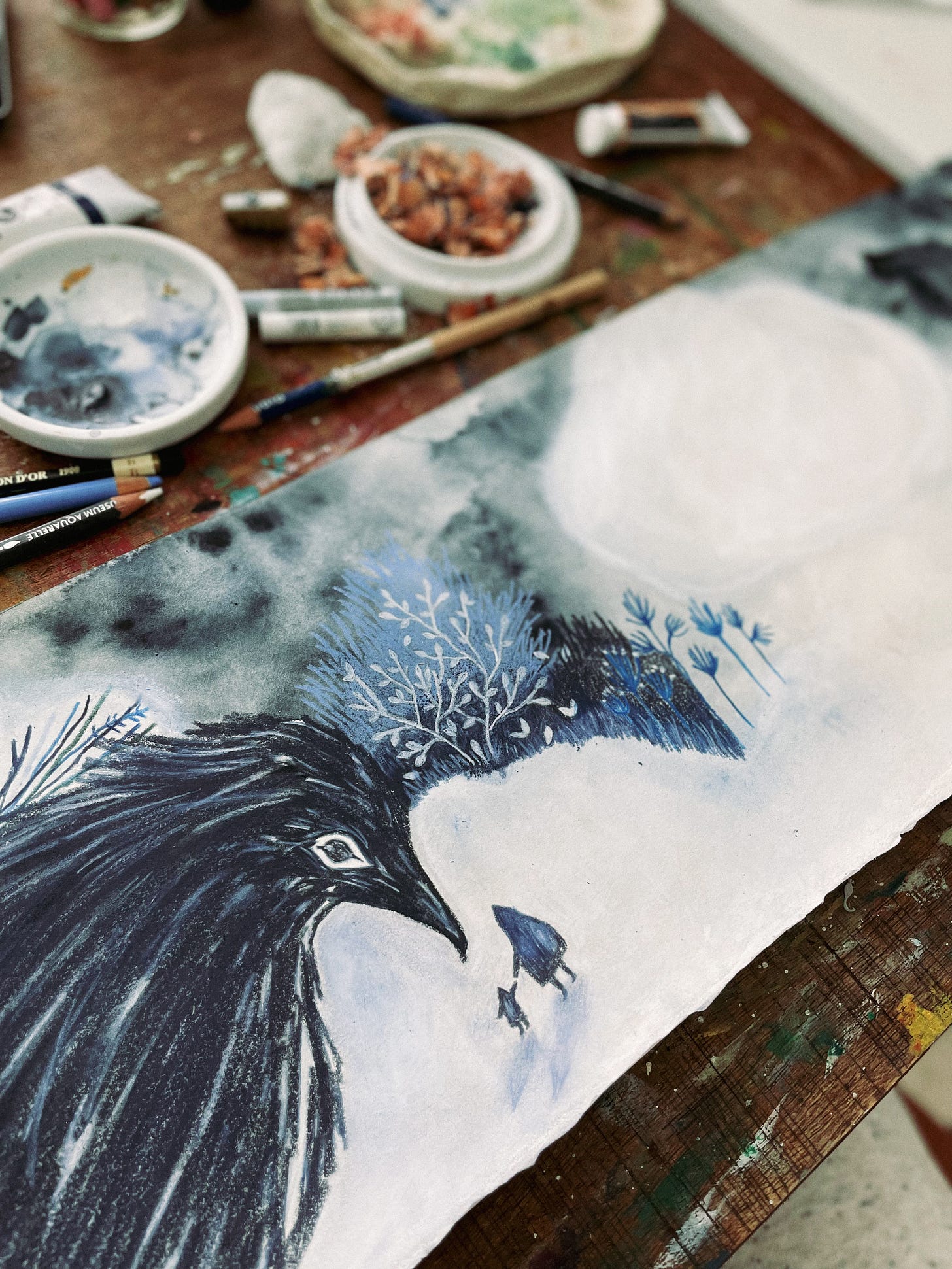
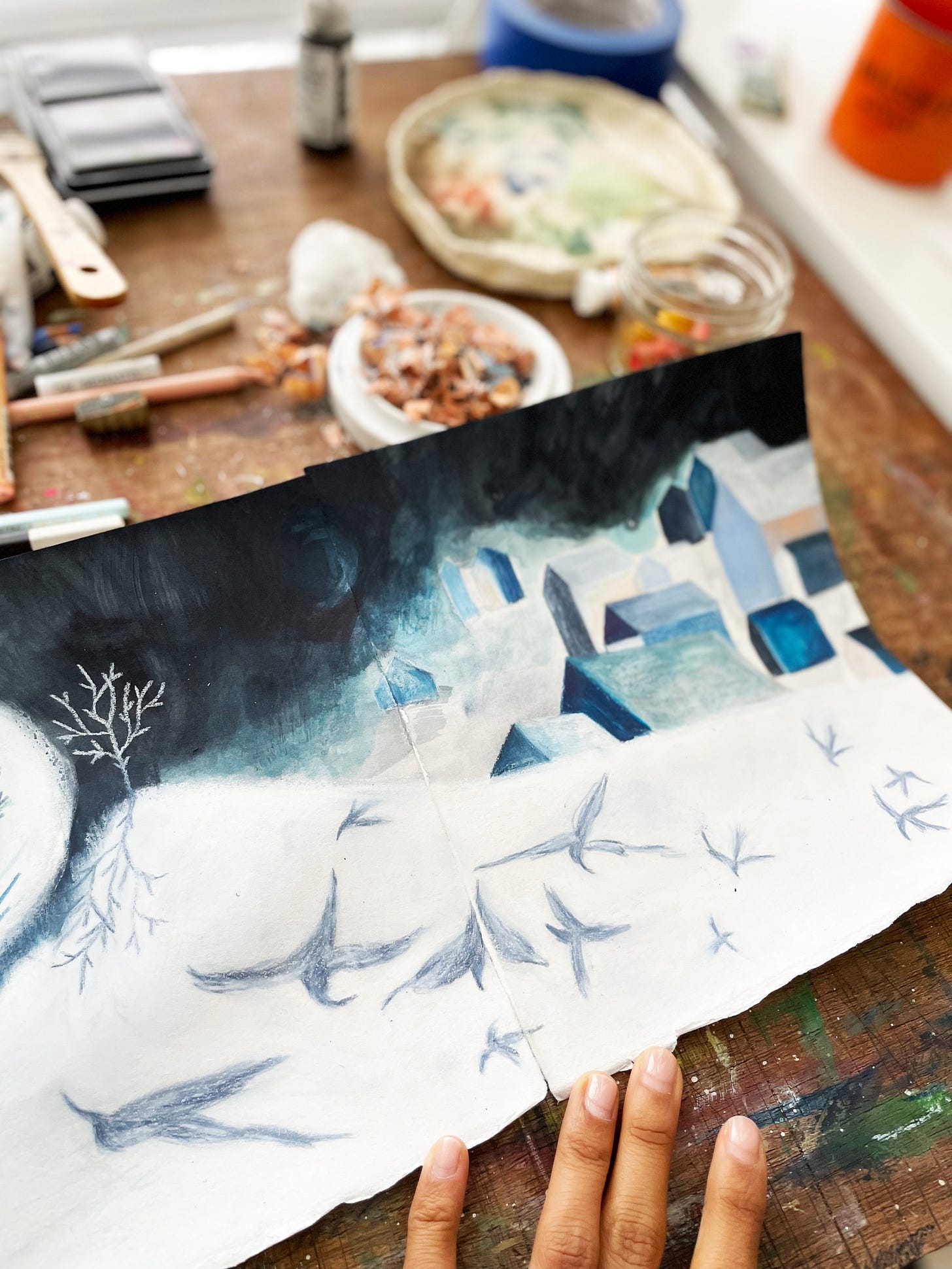
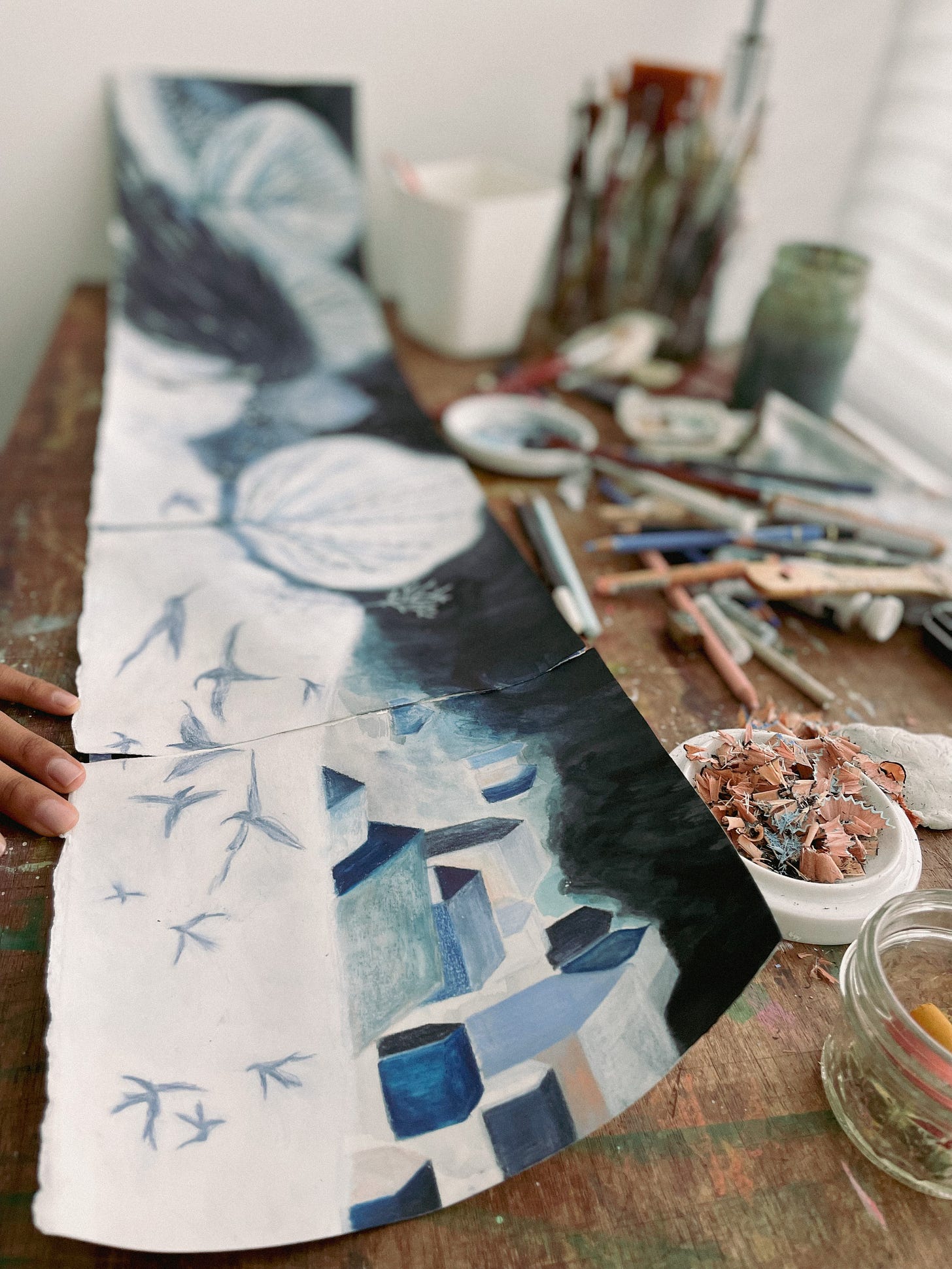
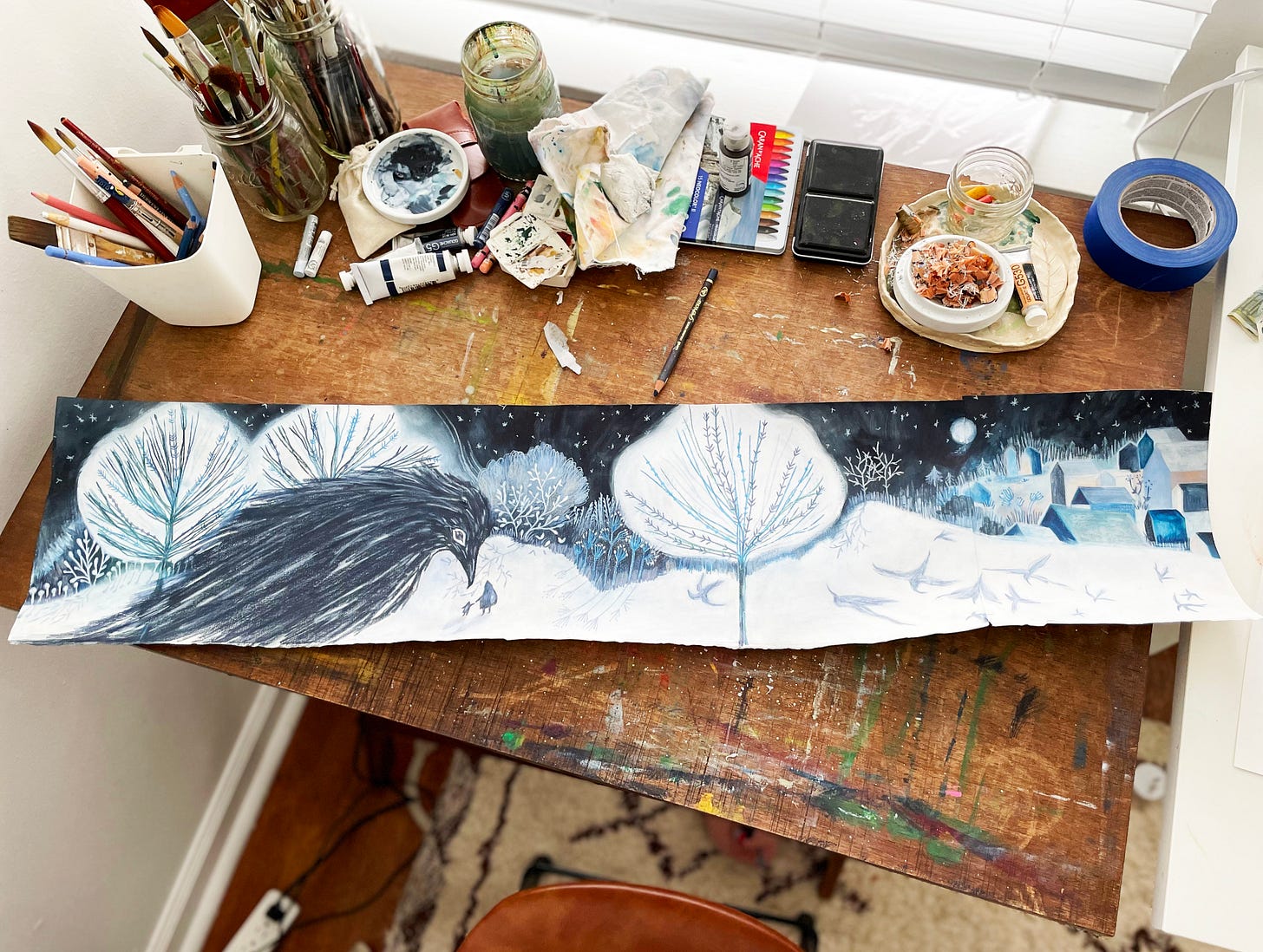
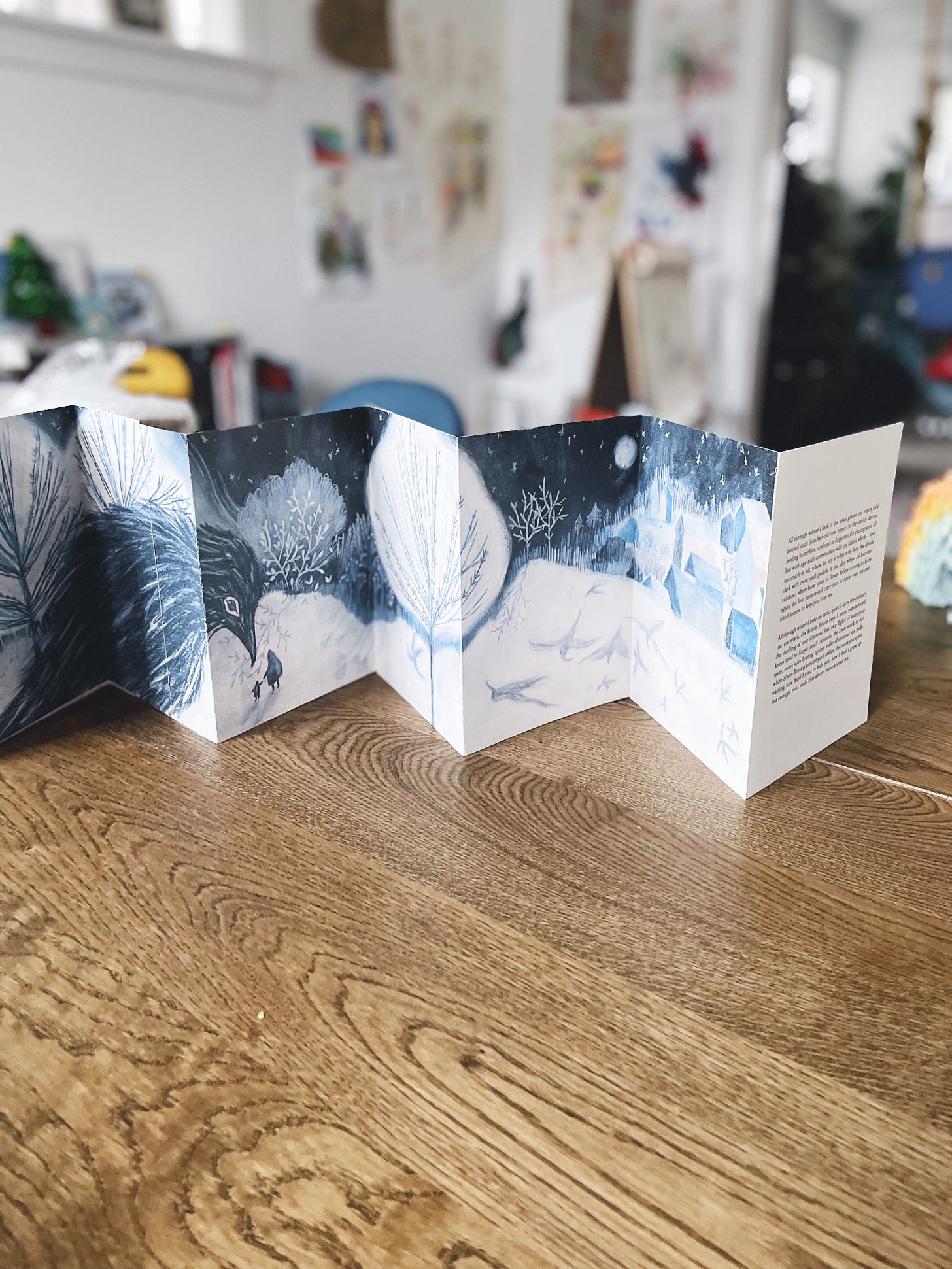
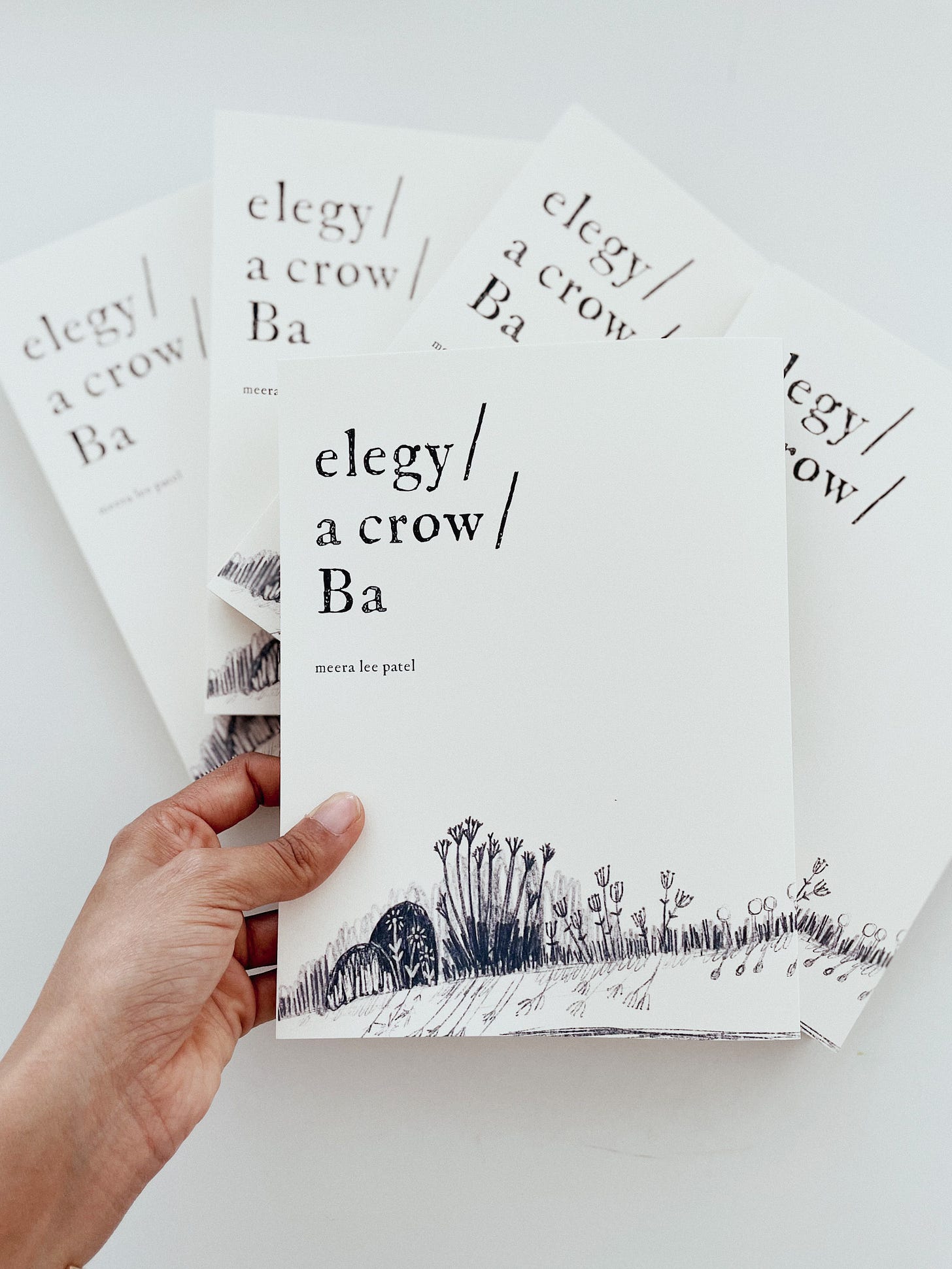
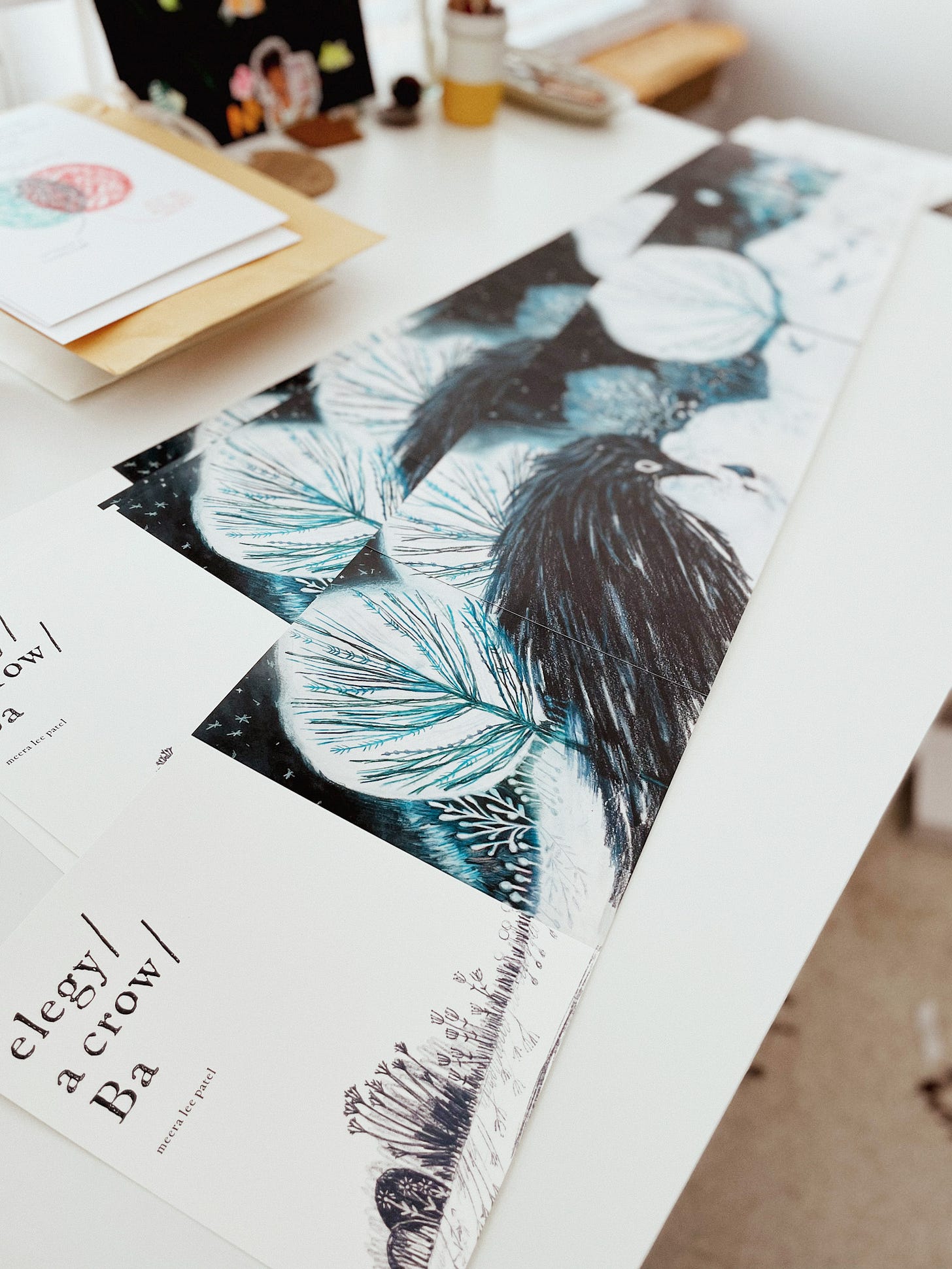
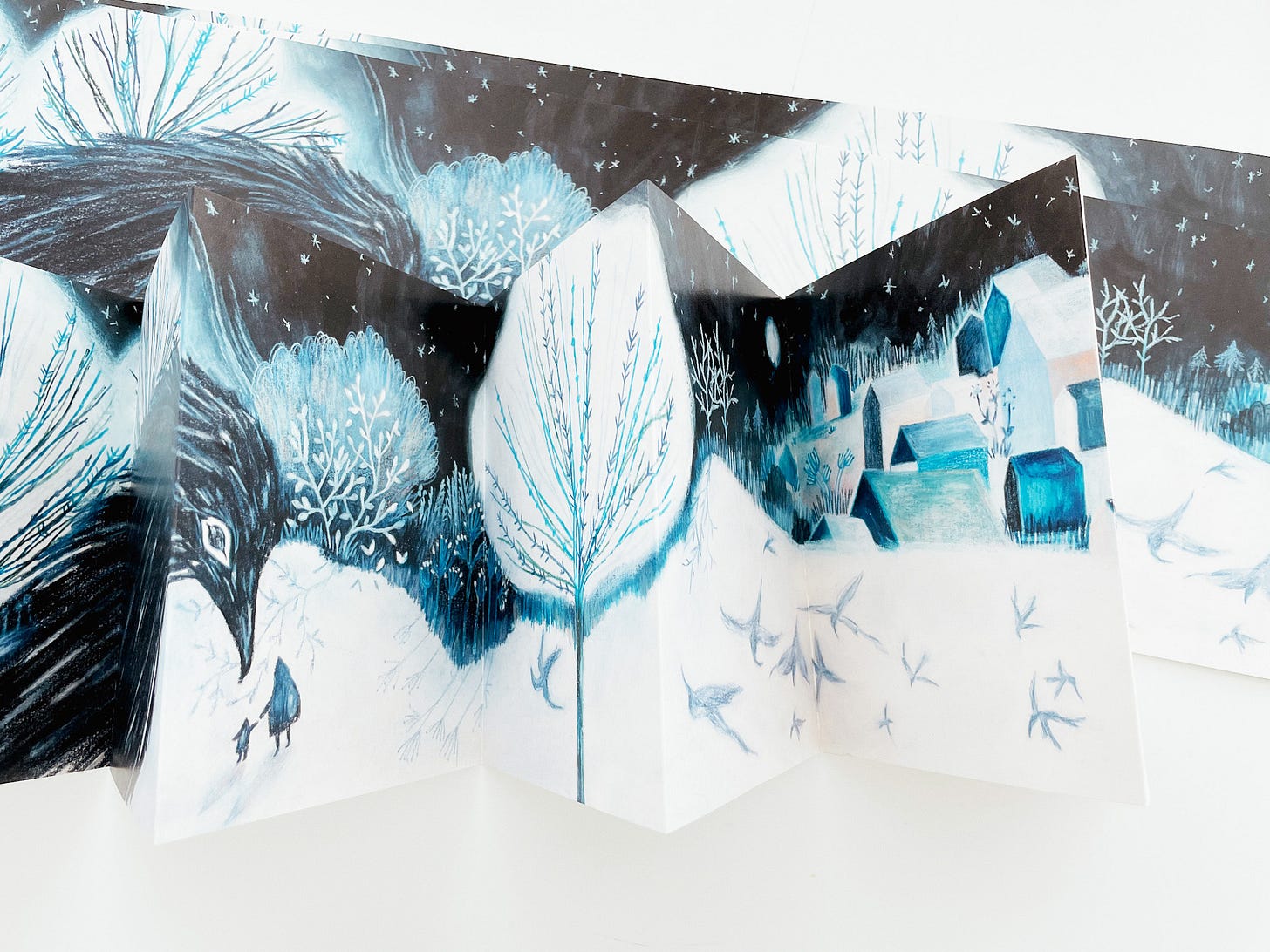
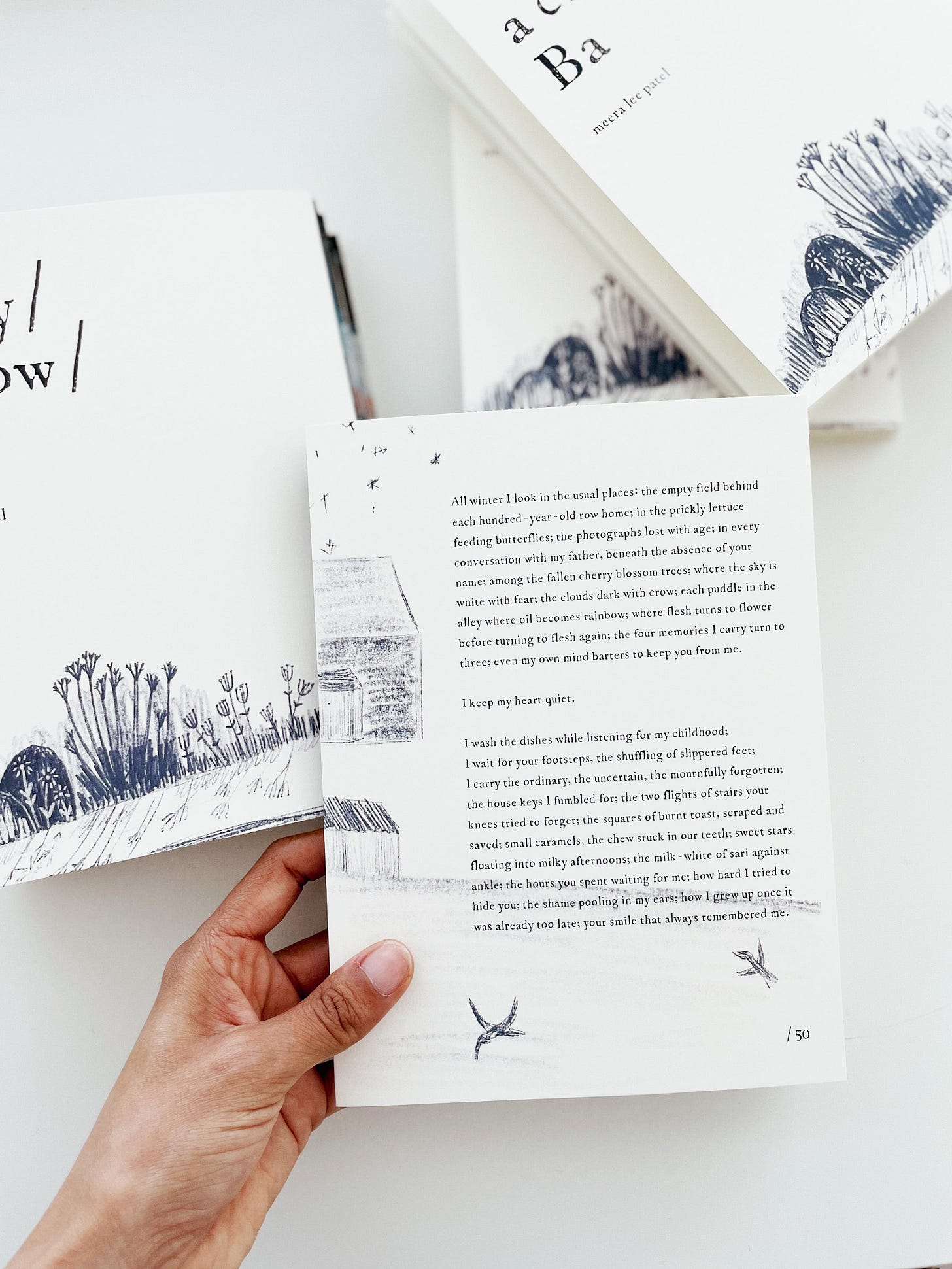

Thank you so much for sharing your process for your accordion book. All of your work is brilliant and fun. I love your ability to join the written word with hand created images and artwork. As a fellow Type A and working as an artist and illustrator I can relate to the difficulty in trusting the process - it's so hard. Thank you for sharing and showing and reminding artists and others that one has to put the work in to reach the desired outcome. So often people just see the end product and don't see how much work has gone into something. I've noticed many children are brilliant at trusting the process and experimenting unencumbered. It's so important (even if difficult) to remember to play and have fun with the work. It often leads to the best outcome! I look forward to seeing your future projects.
Hello dear Meera,
It was so reassuring the number of thumbnail sketches you made! You are an authentic soul and as someone who meanders on the journey at times, you remind me that all steps are fruitful. ^_* Here's to a bigger desk!